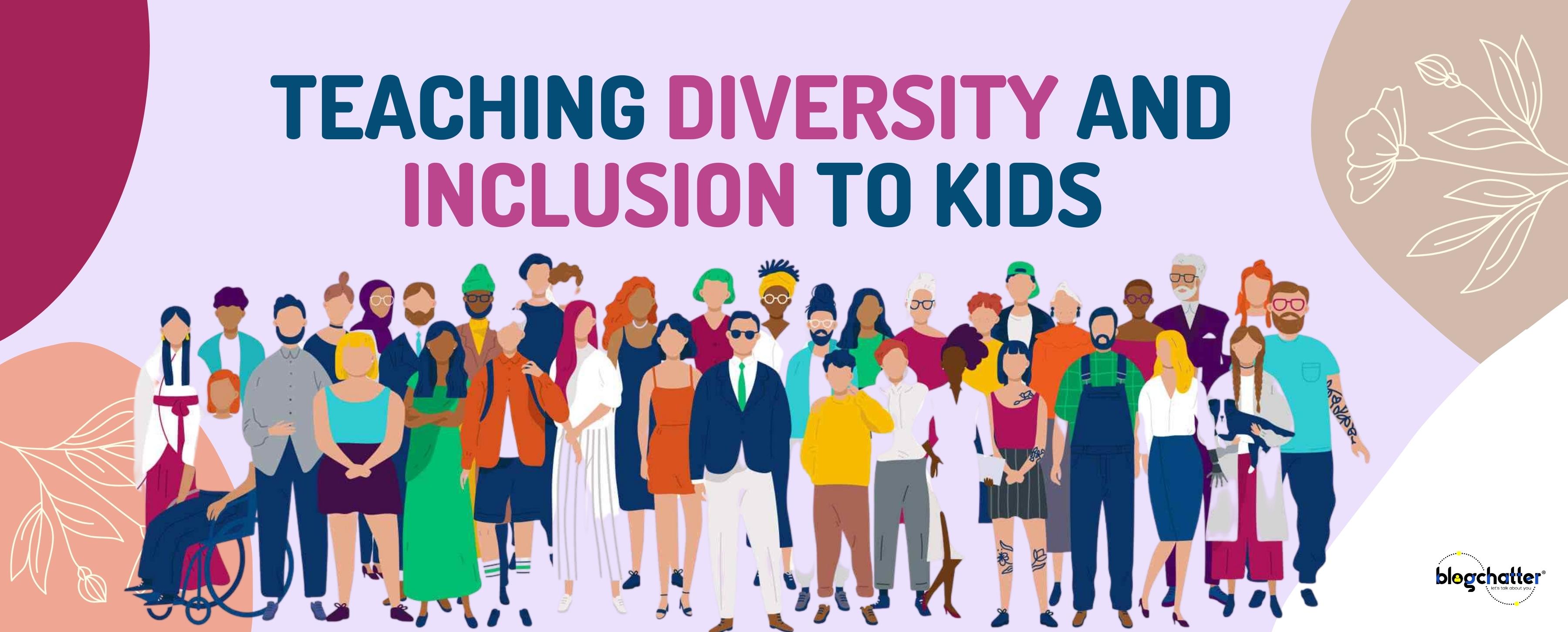Diversity and inclusion are complex words to explain to children. The underlying concepts are abstract and are tough to explain without invoking any prejudices. So, most of us resort to books to explain these concepts and we try to pat our backs thinking we have explained everything about diversity and inclusion to children. Even I was under the same impression for the last couple of months.
During our recent vacation, my child encountered a group of people dressed in their traditional attire. He was seeing that attire for the first time. Being a child he started shouting with joy at the top of his voice pointing towards them. That's when I realized that teaching the principles about diversity and inclusion from books alone is not sufficient. We need to provide the children with experiential learning. Only then true belonging will start developing in their brains. This blog post aims at discussing how to plant those seeds around diversity and inclusion into the children's minds without giving rise to any prejudices.
Diversity is having a seat at the table, inclusion is having a voice, but belonging is having that voice be heard. Liz Fosslier & Mallie West Dutty
What are diversity and inclusion
Diversity means acceptance of differences across the human race. Those differences need not be limited to racism or cultural differences but will include physical, mental abilities, learning styles, family orientations, sexual orientations. Any differences that one can find will fall under this category.
Diversity means accepting that every individual is unique and equally important.
Inclusion is including every individual irrespective of their unique traits into the common group, which works towards achieving a common goal.
Respecting individual differences and talents comes under inclusion.
Why we should teach diversity and inclusion to children
- By understanding the concepts of diversity and inclusion, the kids would stay away from social prejudices and start practicing belongingness. It will teach them to use their judgment and make their own opinion.
- Inclusion and belongingness create a true sense of bonding and happiness in the individuals.
- Research has proven time and again that by practicing inclusion, the overall productivity of the individuals will also improve along with those of companies.
- Diversity and inclusion make the children empathize with those who are different from them.
2.png)
Activities to teach diversity to children
By nature, kids are observant. They start observing the differences between them and others at a young age. So that's the right time to start introducing the concepts of diversity through storybooks. As a parent, we need to emphasize that the differences are just traits and not the complete personality.
Normally children get into prejudices and start name-calling in schools, learning from both the school and home environment. We need to act as good role models to our children and nip these prejudices in the bud.
Few activities that can teach the concepts of diversity to children are:
- Coloring books which contain people with traditional dresses of different nations.
- Handprint activities in which the children get to color different skin tones.
- Teaching about different art forms across different nations or states (Ex: Origami from Japan, Rangoli from India, Ballet from Russia, etc).
- Introducing them to different food types from different regions will also reiterate the different food supplies available in those regions.
- Music is a great source to teach about the diversity of that particular region. Introducing the national/state anthems of each region would reiterate the cultural diversity to children.
Activities to teach inclusion and belongingness to children
Accepting the uniqueness and differences alone is not sufficient, but including the people with those differences in a conversation or group activity is more important. While teaching inclusion and belongingness to children, experiential learning plays a vital role for the kids to start accepting the differences and blending with those people. Some of the activities that we can include:
- Visiting different areas in our city and talking to locals will give the kids a different perspective.
- Visiting the museums will broaden the child's thinking horizons about the regional and cultural differences.
- Virtual tours are a great option to visit distant nations and regions which involve a lot of travel and expenditure. These virtual tours provide a birds-eye view and introduce children to different cultures and traditions.
Practising what you preach
With all the activities mentioned above, we can teach the concepts of diversity and inclusion to children. But to make them practice regularly these concepts, we need to follow these simple tips:
- Encourage open discussion about the differences, and similarities between people.
- Practicing empathy and empowering children to decide which relationship they want to maintain.
- As parents, we need to model inclusive behavior with strangers, family and others.
- We need to provide more opportunities for connections across different regions and cultures.
- Discuss the current events at the age-appropriate level and brainstorm how to promote diversity and inclusion in your neighborhood and schools.
Final thoughts
The world has become a truly global village with internet and mobile connectivity. In this global village, we can't raise a child who is difference agnostic. So making them aware of the differences, is the first step towards acceptance and appreciation of those differences. Fostering this appreciation and inclusion of differences start at home. If we can role model this behavior by overcoming the inborn prejudices and by breaking that vicious circle, then our future communities would have a better life.
Learn more about how you can be a part of diversity and inclusion here.






